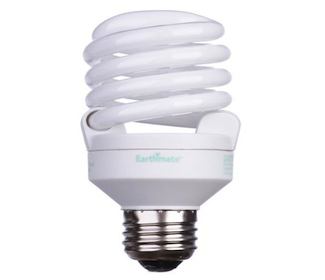Compact Fluorescent Lightbulbs, Part Two
In Part One of this article, we looked at the history of the CFL light bulb and at some of its early shortcomings as an alternative to traditional incandescent bulbs.
In Part Two, we'll look at some of the ways CFL bulbs have improved over the years, and why today they're a great replacement for incandescent's.
Even though CFLs use 75% less electricity than incandescent, early versions didn't catch on with the public for a number of reasons, chief among them that they were quite expensive and gave off an unacceptable light quality. The fact that they often emitted a buzzing sound certainly didn't help their case, either.
Today's CFL Bulb
CFL bulbs have gradually been improving in nearly all ways over the last few years. That's a good thing, because as energy efficiency becomes more important, governments are beginning the gradual phase-out of incandescent lights. Having an acceptable alternative to incandescent's in place is going to be important.
The incandescent phase-out has caused complaints from some about the negative qualities of CFL bulbs that have for the most part been rectified. Here are some of the improvements that have been made to newer CFLs.
Price: Early CFLs, being new, were expensive. Prices have been gradually falling for years, and can now be purchased for as little as a dollar a bulb. Given that the energy they save will result in utility bill reductions of up to $60 per bulb, they're now at a price that makes sense for everybody.
Buzz and Flicker: Early bulbs made a buzzing sound, and had a subliminal flicker that bothered some people. The electronic ballasts of today's CFLs have eliminated these issues entirely.
Size: CFLs were initially much larger than incandescent. Today, they have been shrunk down to the point where they're actually smaller than incandescent in some cases.
Light Quality: The harsh bluish-white light of early fluorescent bulbs is gone; today's CFLs are available in a variety of shades. Soft white bulbs replicate the warm, yellowish glow of incandescent, perfect for living rooms and bedrooms. Cooler white bulbs are better for office environments. A bulbs' light temperature is listed on its packaging.
Potential Drawbacks of CFL Bulbs
CFLs are amazingly efficient and long-lasting, but even with the improvements that have been made to them, they're not perfect. Here are a few potential negatives (although their efficiency and long life-span, in our opinion, trump all of these negatives).
Slow Warm-Up: An incandescent bulb is on at full brightness instantly. A CFL, due to how it works, needs anywhere from a few seconds to a few minutes to reach its full brightness. CFLs in cold locations will take longer. It's not a big deal to most, but it is a difference.
Dimmability: Most CFLs are not designed to work with dimmers. Specially-designed dimmable CFLs are available, but will cost more. Make sure your CFL bulbs aren't used with dimmers unless they're made for it; otherwise, they won't last long.
Mercury: This is the CFLs biggest issue by far. All CFLs contain a small amount of mercury inside their glass tubes, necessary for the lighting process. This makes dealing with burnt-out or broken bulbs important.
We believe that due to the low amount of mercury involved (4 mg per bulb on average), and the fact that it is contained entirely within the bulb (unless broken) should not disqualify them. CFLs are simply the most efficient and affordable substitute for incandescent's we have today.
Mercury in CFLs should be looked at from this perspective: because they use less energy than incandescent, they reduce demand for power, the majority of which comes from coal-powered plants. Coal plants happen to emit mercury as one of the byproducts of energy production. The amount of mercury in each bulb is significantly less than the amount of mercury that is avoided as a result of the bulb's energy savings.
CFLs should be recycled when they're dead so the small amount of mercury doesn't end up in the environment. Most areas (and many stores like Home Depot) offer CFL recycling programs.
If a bulb breaks, simple precautions will prevent harm. Clear the room and open a door or window. Thoroughly clean up all broken glass and powder and put it in a glass jar with lid or sealable plastic bag. Place all the sealed bulb debris and cleanup materials outdoors in a trash container until your trash is picked up. Simple as that.
While CFLs are the best choice for saving energy and money today, their days may be numbered. Newer lighting technologies such as LEDs are coming to market, and may soon overtake CFLs as the light bulb of choice.



























































































































































































